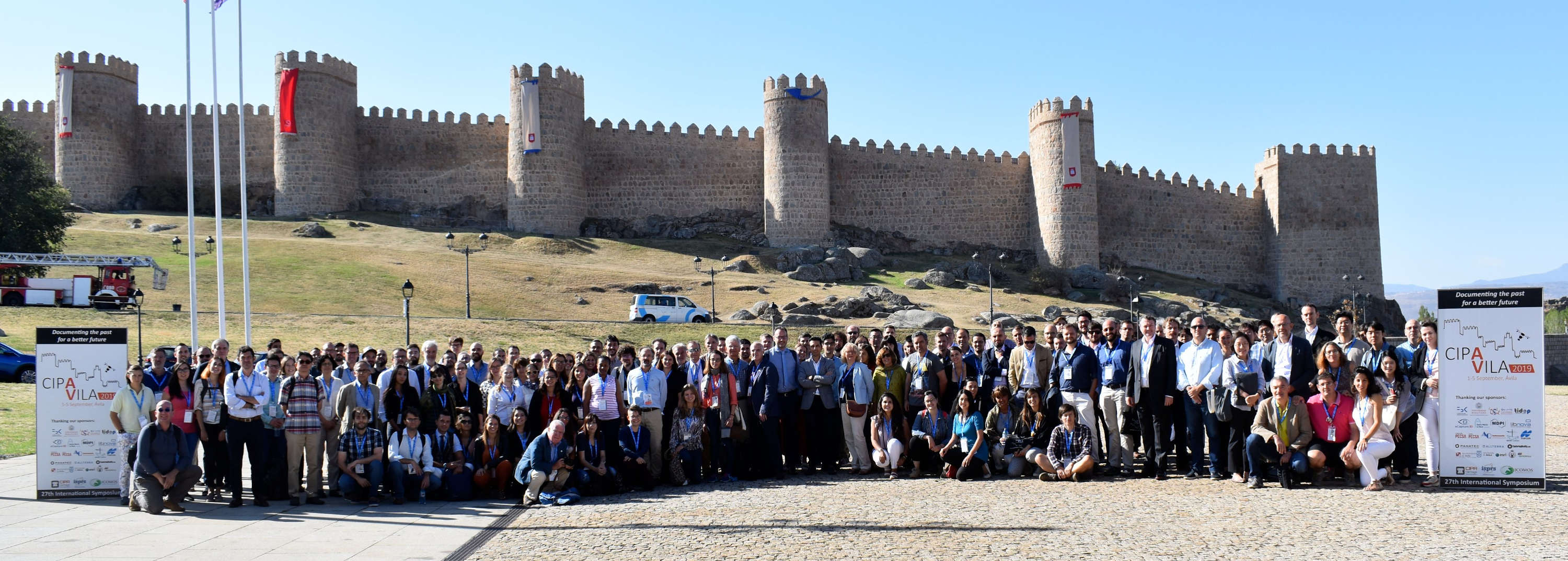Blog item

CIPA 2019 conference in Ávila, Spain
Last week I went to the CIPA Heritage Documentation conference in Ávila, Spain. It was a jovial gathering of the ICOMOS and isprs baby, where many participants shared advances in recording and documenting cultural heritage.
Many papers were devoted to the old new-kid-on-the-block: BIM, which stands for Building Information Modeling. BIM is described as an intelligent 3-D model-based process that could empower architecture, engineering, and construction professionals to efficiently plan, design, construct, and manage buildings and infrastructure. It thus makes sense that the CIPA community is very much excited to likewise apply this new standard to heritage monuments and sites. Many of the BIM-papers presented, investigated, and addressed the challenges of representations of geometries of the heritage asset. In few case studies, however, was BIM actually implemented for inventory, condition assessment and maintenance planning. The combined usage of BIM and GIS technology, albeit without immediate success, emerged in between the lines as a strategy at the heart of many contributors.
Several examples of managing recorded data documentation information in 3D-based web platforms were presented as well. In the perspective of the very fast-paced field, those experimental applications seem only feasible if the development of these tools is part of your research mission in the first place. In that regard, I wonder how the developments of those platforms could happen in a more sustainable and cooperative manner by getting involved with mature Open Source communities. Although many of the papers presented were applied to cultural heritage sites, their purpose with regard to the conservation of the heritage asset was not always clear. This issue was highlighted in the keynote speech of Geert Verhoeven at the beginning of the conference. His talk was also my favorite contribution in the conference. Yes, the efforts of heritage recording experts need always to be well coordinated with local authorities and in situ conservation professionals. The main questions guiding these campaigns should thus be: Why is this record being produced? and: For whom is its use intended?
The ethics of heritage recording was another big talking point, revolving primarily around who owns the data produced and who should have the right to access it. From my perspective, it will be crucial, especially in international projects, to avoid exploiting heritage sites simply as sexy case studies, testing the capabilities of a tool or technique, rather than aiming to maximize the benefit to the conservation of the heritage asset and to the local heritage professionals taking care of it. Overall, CIPA 2019 was a stimulating event. The fantastic organizers fostered a great sense of community through creative social events such as Tapas tours, Welcome and Gala dinner events, as well as wonderful site visits in the rich medieval city of Ávila.
Hope to see you all again in 2021. Many thanks!